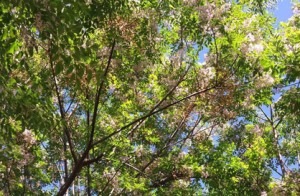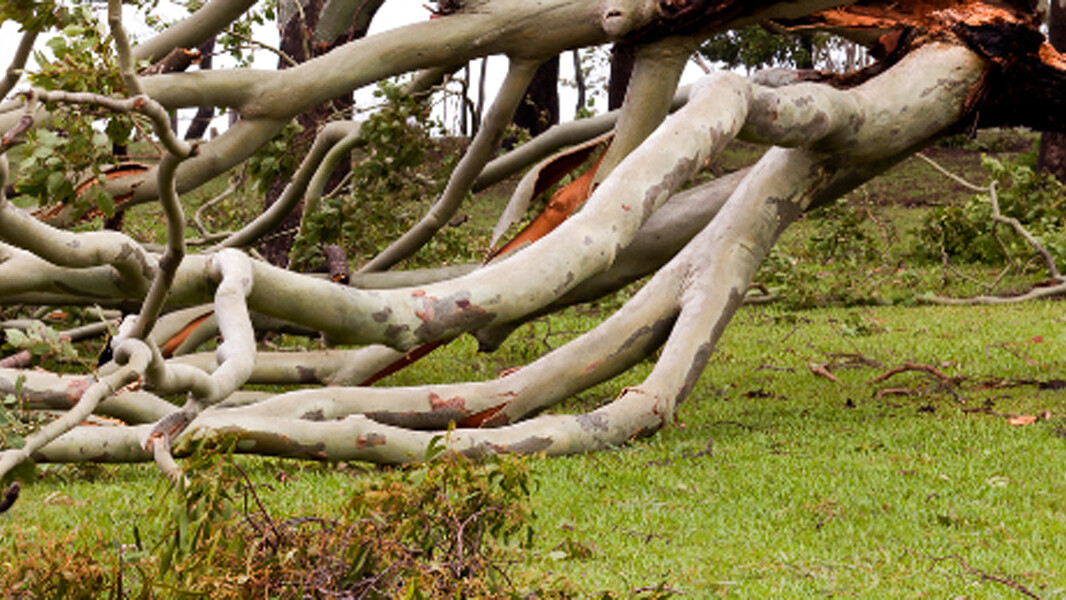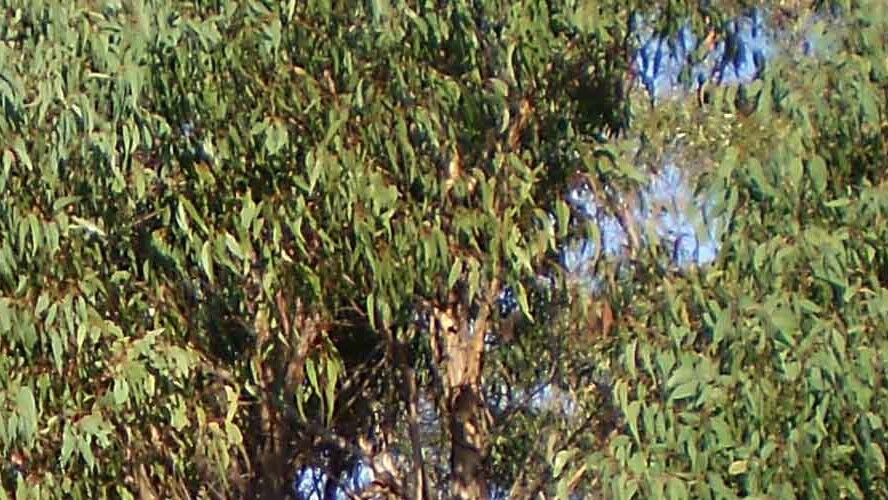There is always something that makes a plant less than perfect but until I discovered the seeds of Melia azedarach were toxic to humans and other mammals and that it has become a serious environmental weed in some areas, this tree was perfect!
White Cedar (Melia azedarach) is a beautiful shade tree that is extremely drought tolerant. Oddly enough, though, the tree grows from the east coast (extending from the Victorian border right up to the top of Cape York) and the top of the Northern Territory, so its drought tolerance is a bit of a surprise.
Another surprise is that it is winter deciduous and we don’t have many winter deciduous plants native to Australia. In spring, just as the new glossy leaves emerge, the tree starts flowering and may continue to do so into summer. It’s worth planting this tree for the spring show alone. The starry lilac and white flowers appear in beautiful clusters. The flowers are also lightly fragrant, often described as chocolate-like.
Following on from the flowers are the seeds and for humans, one of the tree’s flaws as an ornamental. However, the seeds are hard, which has made them very desirable for use as beads, including rosary beads. As toxic as the seeds are and considering how widely the tree is planted, especially in parklands and as street trees, there have been only a few recorded poisonings, including dogs. The tree should not be planted where livestock can graze the seeds or leaves (leaves were implicated in 1974 as also containing the toxic compounds).
While toxic to animals, many birds are able to eat the seeds, which would have, along with human cultivation, helped the plant become the weed it has in some areas. It has become a serious problem in the Northern Territory (outside of its natural range) and Western Australia in particular but it has naturalised in all mainland states, so if you think you might be interested in planting it check that it’s not a problem where you are.
Now we can get back to its attributes. Along with considerable drought tolerance is its ability to tolerate temporary inundation. It also thrives in a wide variety of soil types (from sand through to heavy clay), is quite frost tolerant, and Grow What Where categorises it as being fire retardant.
 While the flowers get most attention, the leaves are also a lovely feature of the tree. They are bipinnate – with many oval to elliptical leaflets, each from 20 to 70cm in length, that darken with age from the fresh, glossy green at emergence in spring. It really is a lovely tree to sit under, with all the leaflets dancing independently in a breeze.
While the flowers get most attention, the leaves are also a lovely feature of the tree. They are bipinnate – with many oval to elliptical leaflets, each from 20 to 70cm in length, that darken with age from the fresh, glossy green at emergence in spring. It really is a lovely tree to sit under, with all the leaflets dancing independently in a breeze.
The tree is defined as small to medium. But I wouldn’t pay too much attention to that. In its natural habitat it can grow to 35 metres in height, but is most often described as growing from between 6 to 12 metres in height with a canopy of 6 to 8 metres.
A little formative pruning as the tree grows will encourage it to develop its naturally rounded canopy, but other than that, it’s a pretty easy tree to maintain. It’s also responsive to pollarding. The hairy caterpillar of the White Cedar Moth, Leptocneria reducta, is its only serious nemesis, causing severe defoliation in large numbers.
Melia azedarach is a member of the Meliaceae Family, commonly called the mahogany family and while we most often refer to it as White Cedar it is also known as Persian Lilac, Umbrella Tree and Chinaberry, the latter being its common name, especially in the USA.
Propagation is by seed (no pre-treatment required) or cuttings.
A word of warning: because it produces seeds so readily, and they can be dispersed by birds, it can become a weed outside of its original habitat – especially in Western Australia and parts of the Northern Territory.
In the USA and New Zealand it is a declared weed.
References
Australian National Botanic Gardens: http://www.anbg.gov.au/gnp/interns-2008/melia-azedarach.html
Australian Native Plants Society: http://anpsa.org.au/m-aze.html
Peate, N., Macdonald, G. & Talbot, A., 2006, 3rd edition, Grow What Where, Bloomings Books, Melbourne
Related Articles:
Why Living Trees Suddenly Fall Down
It is quite common that in winter or after big storms we wonder why living trees suddenly fall down. In June 2021 in Victoria, savage storms swept…




